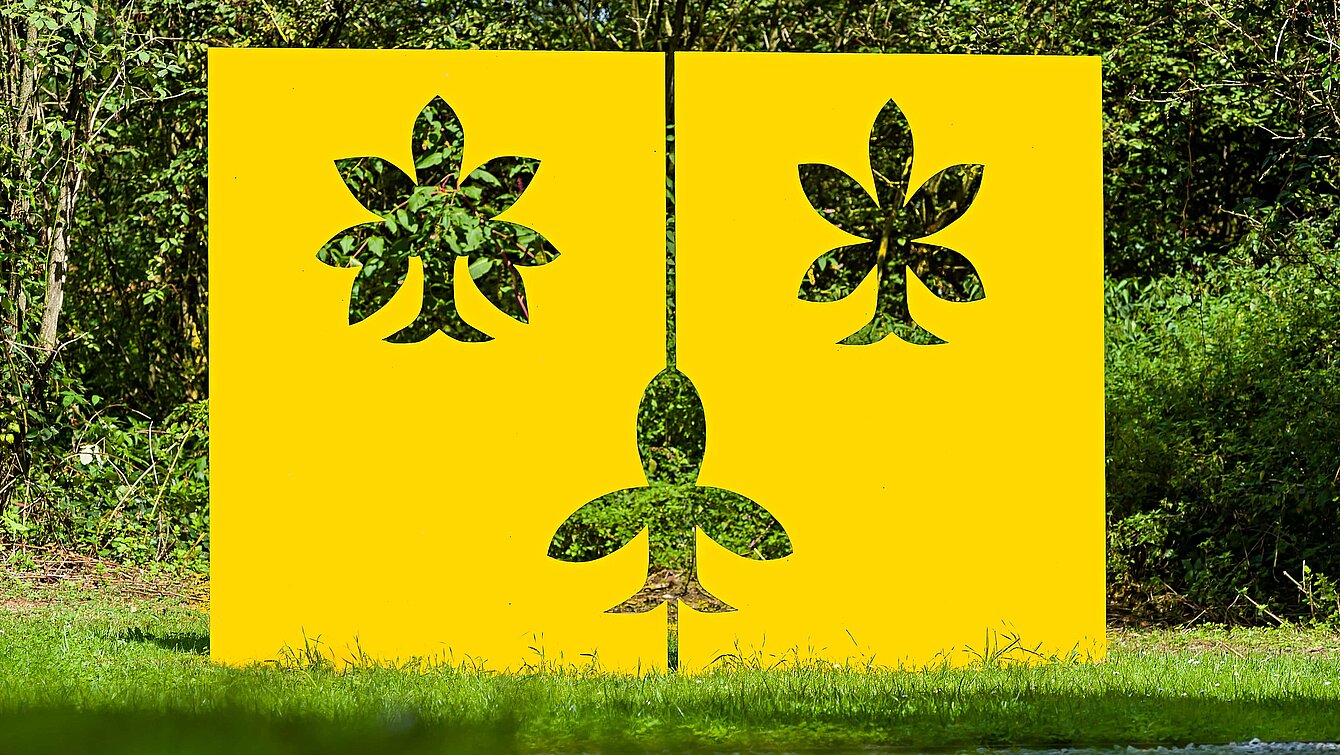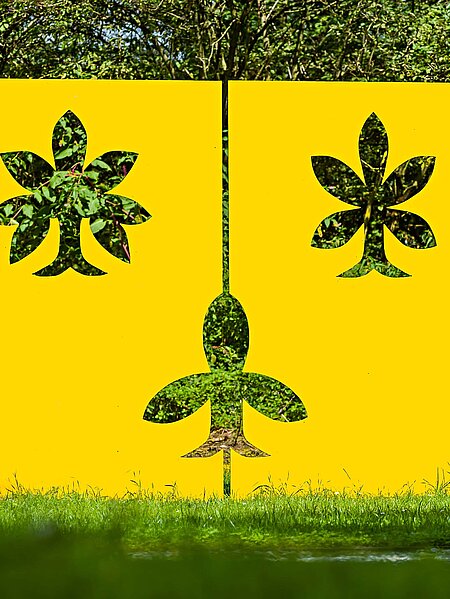Sommerer’s sculpture follows the natural shapes of leaves and investigates how far their reality is changed when their forms are stylised. The object—a kind of dividing screen with three large leaf outlines cut out of it—has boldly coloured surfaces that contrast with its natural surroundings. At the same time, the shapes it holds refer to exactly this environment. In principle the cut-outs are the same shape as the thousands of barely perceptible forms that can be found in the leafy forest in the background, so that Phyllologia clearly references the park.
Phyllologia
Christa Sommerer, 1991


Image Credits
Author
Werner Fenz
Location on map
Position 20
Owner
OÖ Landes-Kultur GmbH
Artist biography
Christa Sommerer
Show all
About the sculpture
At the time of the creation of her work, Christa Sommer, a biologist, was fascinated by Carl von Linné’s systematics of plants. And it was not only the scientific meaning thereof, but also the question of the extent to which, through conventionalising of forms, their degree of reality is changed too, whether this is through them losing their individual character or pushing their special characteristics right into the foreground.
In this respect “Phyllologia”, a kind of paravent with three large leave shapes cut out, has a special meaning due to its peculiar position in nature. On one hand, the boldly coloured object, contrasts forcedly with the environment; on the other, it presents a clearly referential character due to the repertoire of forms used.
With its reduction to three examples, and supported by the colour of the carrier sheet, a clear signal is set. With the translation of the basic material, of the artificially created drawn form, we witness a change of meaning on several different levels. First of all with the transfer into a negative, and then with the shift of scale, focusing on the phenomenon of a change thereof.
The creation of a decided context in a park is due to the frame forms which, despite the coloured barrier, allow for a view onto the landscape behind. Due to the fact that the three sections show in principle the very same figure as the thousands of barely recognisable “figures” in the woods behind, we consciously or subconsciously activate a referential grid, determining the visual experience as a comparative act in this both alien and site-specific intervention.



















